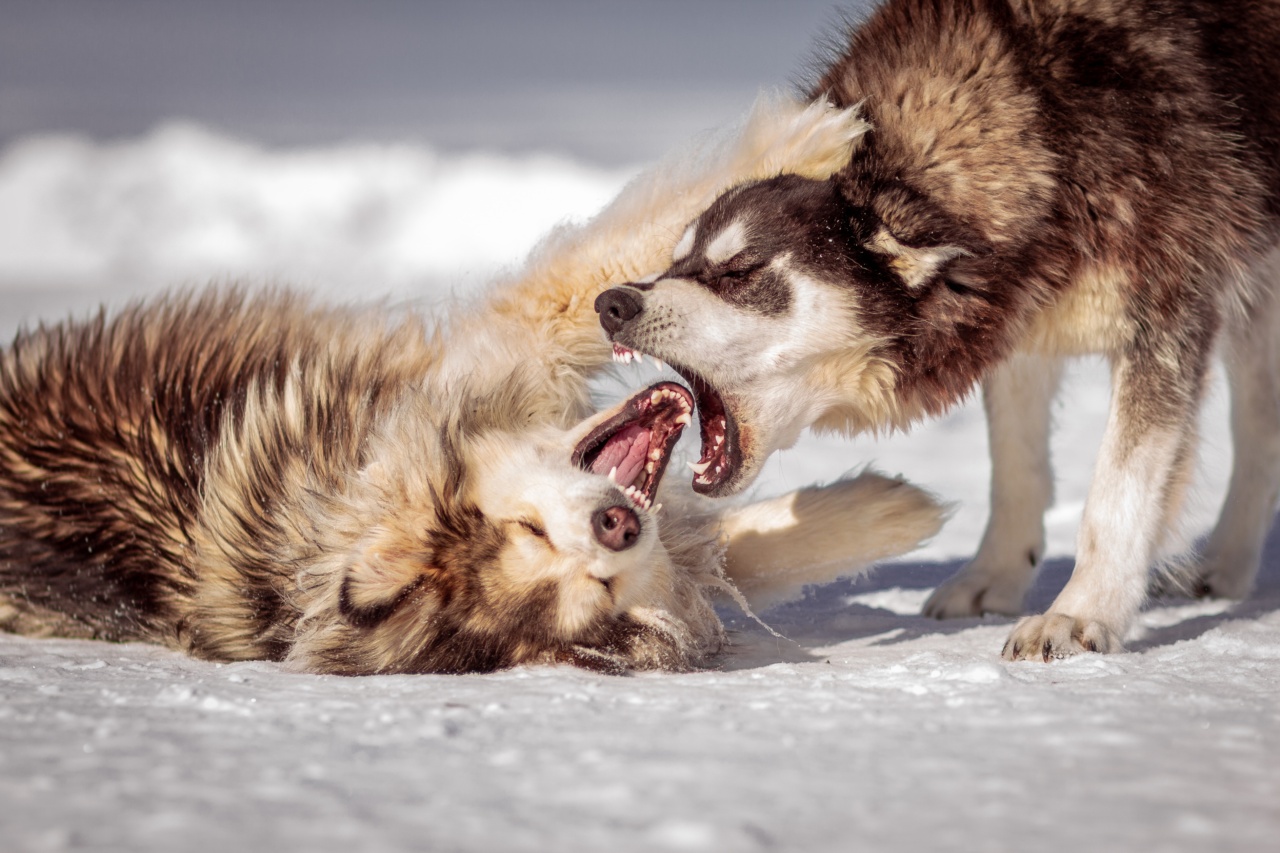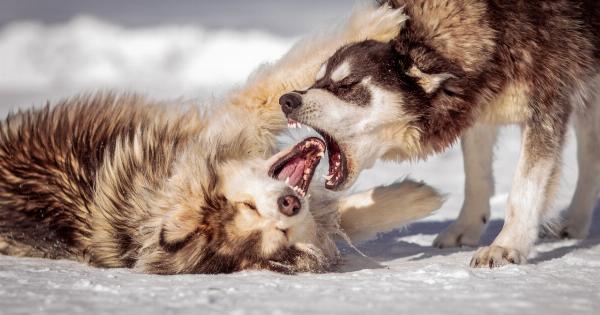Dogs are often referred to as man’s best friend, but sometimes, they can display behaviors that are aggressive and concerning. Aggression in dogs can be attributed to various factors, including genetics, environment, and training.
However, there are also invisible signals that we unknowingly send to our dogs that can encourage aggression. Understanding and addressing these signals is crucial in promoting a healthy and non-aggressive relationship with our furry companions.
1. Lack of Socialization
One of the most common invisible signals we can unintentionally send our dogs is a lack of socialization. Dogs are social animals and need to engage with other dogs, animals, and humans in order to develop appropriate social skills.
Without proper socialization, dogs may become fearful and anxious, which can lead to aggression as a defense mechanism. Exposing our dogs to different environments, people, and animals from a young age can help prevent the development of aggression.
2. Inconsistency in Training
Consistent and positive reinforcement training is essential for a well-behaved and non-aggressive dog.
Dogs thrive on structure and clear expectations, but when we send mixed signals or fail to enforce consistent rules, it can confuse our dogs and lead to frustration or aggression. It’s important to establish and stick to a training routine that promotes positive behaviors and discourages aggression.
3. Rewarding Dominance Behaviors
Some pet owners may unknowingly encourage aggressive behaviors in their dogs by rewarding dominance behaviors. This can include activities like allowing the dog to jump on furniture, growling at strangers, or asserting dominance over other pets.
While these behaviors may seem harmless or even cute at first, they can escalate into more aggressive behaviors if not addressed and corrected early on.
4. Lack of Exercise and Mental Stimulation
Dogs, especially certain breeds, require regular exercise and mental stimulation to prevent boredom and pent-up energy. When our dogs do not receive adequate exercise or mental stimulation, they may resort to destructive behaviors and aggression.
Providing daily walks, playtime, and puzzle toys can help keep our dogs physically and mentally engaged, reducing the likelihood of aggressive tendencies.
5. Reinforcing Fear
Another invisible signal that can contribute to aggression in dogs is reinforcing fear. When we coddle or comfort our dogs excessively during fearful situations, we unintentionally reinforce their fear and anxiety.
This can lead to a heightened response, including aggression, in similar situations in the future. Instead, it’s important to remain calm and provide a sense of security and confidence to help our dogs overcome their fears.
6. Punishment-Based Training Methods
Using punishment-based training methods, such as yelling, hitting, or using aversive tools like shock collars, can have detrimental effects on a dog’s behavior.
These methods can increase fear and anxiety, which can ultimately result in aggressive behaviors. Positive reinforcement training, which rewards desired behaviors instead, is a much more effective and humane approach that can help reduce aggression in dogs.
7. Ignoring Body Language
Dogs communicate primarily through body language, and understanding their signals is crucial in preventing aggression. Ignoring or misinterpreting a dog’s body language can inadvertently encourage aggressive behavior.
Signs such as growling, raised hackles, or a stiff body posture should never be ignored or dismissed. It’s important to learn and respect our dog’s body language to prevent any potential escalation in aggression.
8. Encouraging Possessiveness
Allowing or encouraging possessiveness over resources, such as food, toys, or sleeping areas, can contribute to aggressive behaviors in dogs.
When dogs develop a sense of ownership over their possessions and become possessive, they may display aggression towards anyone who attempts to approach or take away their resources. Teaching our dogs to share and not claiming sole ownership over their belongings can help prevent possessive aggression.
9. Unresolved Medical Issues
Unaddressed medical issues can also be a hidden cause of aggression in dogs. Pain or discomfort can significantly impact a dog’s behavior and tolerance levels, making them more prone to aggression.
Regular veterinary check-ups and addressing any medical concerns promptly can help ensure our dogs remain free of pain and discomfort, reducing the likelihood of aggression stemming from these underlying issues.
10. Overprotection
While it is natural for us to want to protect our dogs, overprotective behavior can inadvertently teach our dogs to be more aggressive.
Constantly shielding our dogs from any potential threats or not allowing them to interact with others can reinforce their fear and anxiety, leading to aggressive responses. Striking a balance between protection and allowing our dogs to experience the world around them is essential for preventing aggression.
Conclusion
Aggression in dogs can be influenced by various factors, including genetics, environment, and training. However, the invisible signals we unintentionally send our dogs also play a significant role in encouraging aggression.
By being aware of these signals and addressing them, we can promote a healthier and non-aggressive relationship with our canine companions. Socialization, consistent training, and providing adequate exercise and mental stimulation are key components in preventing aggression.
It’s also important to understand and respect a dog’s body language, avoid rewarding dominance behaviors, and steer clear of punishment-based training methods. By creating a safe and nurturing environment for our dogs, we can reduce the likelihood of aggression and foster a loving bond.


























